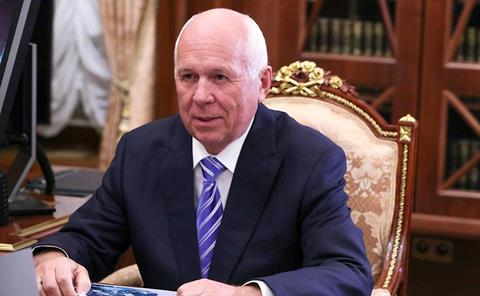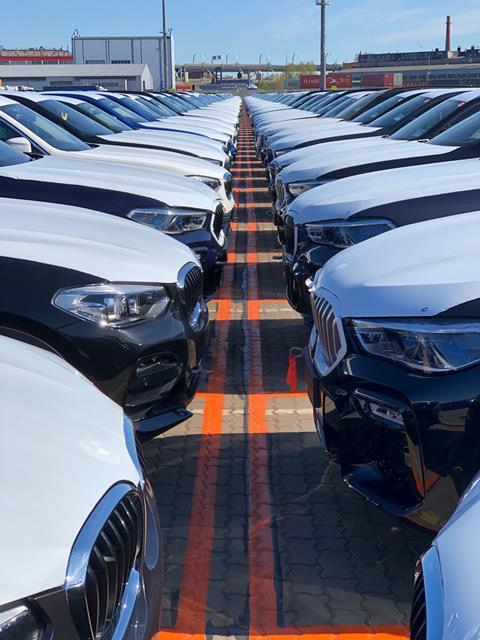Rosteс, the parent company of Russia’s leading automaker Avtovaz, wants government authorities to limit the flow of Chinese finished vehicles into the country. The request follows a number of tariff measures taken by western nations, including Europe and the US, to tackle subsidised imports specific to electric vehicles.
Sergey Chemezov, general director of Rosteс (pictured), said in an interview with local news outlet RBC that Russia will have no choice but to restrict Chinese vehicle imports.

Chemezov revealed that Asian companies are reluctant to officially recognise their presence on the Russian market, fearing secondary sanctions from the US and the EU. He added that the companies are keen on continuing operations in the country since Russia is a “big and relatively effective market”.
This is not the first time Avtovaz officials have complained about overwhelming Chinese vehicle imports.
In March 2024, Maxim Sokolov, the general director of Avtovaz, expressed grave concerns about the rapid expansion of Chinese automakers in Russia. He highlighted the issue of Chinese brands encroaching into market segments traditionally dominated by Lada brands, often offering discounts that nullify the price difference secured by the utilisation fee.
Under Russian law, all vehicle manufacturers and importers pay a utilisation fee, but for local OEMs the costs are compensated from the federal budget to bolster their competitiveness.
During the St Petersburg Economic Forum in June 2024, Avtovaz vice-president Sergey Gromak came up with a proposal to impose “a long-term indexation scale” for the utilisation fee. He explained that this step would push Chinese automakers from exporting their products to localisation on the Russian capacities.
“The proposal is not about not letting anyone in,” Gromak said. “However, let foreign OEMs come only as manufacturers, not just importers.”
Citroën in Kaluga
Chinese firms taking part in any localisation projects in Russia opt to keep a low profile. For example, Russian firm Automotive Technologies has recently unveiled plans to put the former Kaluga PSMA Rus plant back in operation to assemble Citroёn С5 Aircross with the help of an unknown Chinese company.
This is the first time the assembly of a western model is due to re-start in Russia since sanctions triggered a mass exodus of automakers from the local market. However, the French company reportedly has no direct relation to the project.
A company spokesman reported that Automotive Technologies negotiated with a Chinese partner the import of 798 automotive components. In the future, the Russian firm will target expanding the range by adding some Chinese brands.
Surge of imports
Avtovaz has every reason to be concerned about the growing presence of Chinese businesses in the Russian automotive market. In 2023, Chinese finished vehicle exports to Russia surged by 593% compared with the previous year, reaching $11.6 billion, the official customs data shows. Nearly 15% of Chinese exports land in Russia.
As revealed by Sokolov, Avtovaz accounts for 35% of the Russian finished vehicle market – the highest figure ever. In monetary terms, the picture is less joyful: the automaker’s share is limited to 10% or 11%.
Albert Karimov, deputy Russian minister for Industry and Trade, recently stated during a press conference in St Petersburg that the Russian government has no immediate plans to limit Chinese vehicle exports to Russia. However, he hinted that the possibility of raising the utilisation fee for imported finished vehicles is not off the table, leaving the future of this issue uncertain.

A string of sanctions
The future of Chinese automotive exports to Russia is shrouded in uncertainty, not because of a potential shift in state policy, but because of the profound impact of fresh sanctions from the West. These restrictions have caused trade between the two countries to falter in recent months, potentially disrupting the automotive industry dynamics.
In March 2024, Russia saw a 20% drop in imports, including a 19% decline in the vehicle and machinery segment, primarily comprised of finished vehicles, according to the Russian Federal Customs Service. A drop from Asia, which accounts for over 66% of supplies, has primarily contributed to the downward dynamics.
Analysts believe that the nearly two-year upward trend in Chinese automotive exports to Russia has reversed in recent months, though there is no concrete data to support this claim owing to a partial information blackout imposed by the Russian government.
“In the absence of detailed statistics on foreign trade and the structure of Russian payments, many processes can be judged only by indirect signs or based on aggregate statistics,” Alexander Firanchuk, senior researcher of the Moscow-based Ranera Institute, explained.
Firanchuk added that the trade started crumbling under Western pressure, particularly the US threat to impose secondary sanctions against foreign banks and financial institutions facilitating Russian foreign trade.
The problems started in January 2024 and have been gaining momentum ever since, local economists indicated. Today, 90% of Russian payments do not reach China, the Russian-Chinese Committee of Friendship, Peace and Development said. Chinese firms now require full prepayment of ordered goods, fearing settlement issues.
Ekaterina Kizevich, CEO of Atvira, a Russian foreign trade consultancy, reported that a couple of months ago, importers still had the opportunity to make payments through third countries, for example, Kyrgyzstan or Singapore, but now the scheme no longer works.
Kizevich added that even with the working schemes, the supply chain stretches, entailing an up to 30% rise in the price of delivered goods.
The US sanctions against the Moscow Stock Exchange imposed on June 13, which effectively banned dollar and euro trading at the country’s leading marketplace, promise to put additional pressure on foreign trade.


























![Global[1]](https://d3n5uof8vony13.cloudfront.net/Pictures/web/a/d/s/global1_726550.svgz)













No comments yet